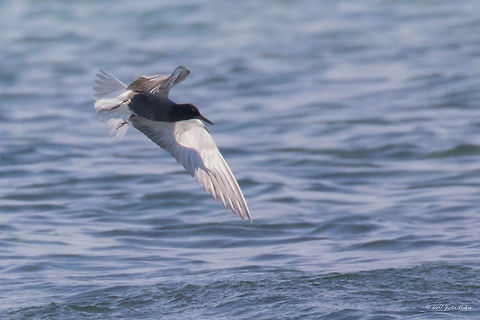
Appearance
Adults are 25 cm long, with a wingspan 61 cm, and weigh 62 g. They have short dark legs and a short, weak-looking black bill, measuring 27 mm, nearly as long as the head.The bill is long, slender, and looks slightly decurved. They have a dark grey back, with a white forewing, black head, neck and belly, black or blackish-brown cap, and a light brownish-grey, 'square' tail.
The face is white. There is a big dark triangular patch in front of the eye, and a broadish white collar in juveniles. There are greyish-brown smudges on the ides of the white breast, a downwards extension of the plumage of the upperparts. These marks vary in size and are not conspicuous. In non-breeding plumage, most of the black, apart from the cap, is replaced by grey. The plumage of the upperparts is drab, with pale feather-edgings. The rump is brownish-grey.
The North American race, "C. n. surinamensis", is distinguishable from the European form in all plumages, and is considered by some to be a separate species.
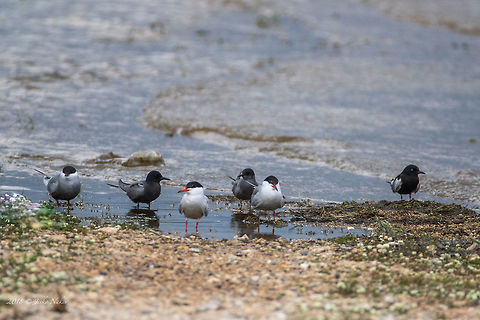
Naming
The genus name is from Ancient Greek "khelidonios", "swallow-like", from "khelidon", "swallow": another old English name for the black tern is "carr swallow". The species name is from Latin "niger" "shining black".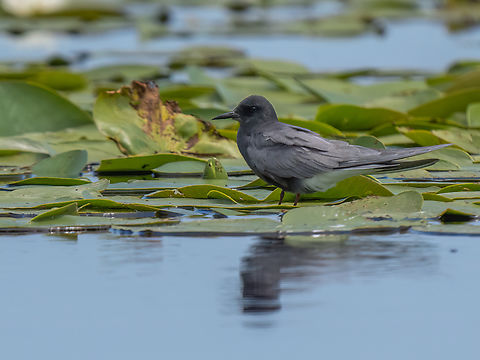
Status
The North American population has declined in recent times due to loss of habitat.The black tern is one of the species to which the "Agreement on the Conservation of African-Eurasian Migratory Waterbirds" applies.
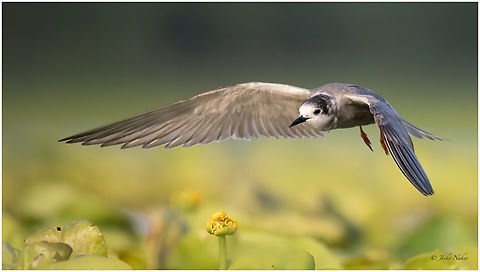
Behavior
In flight, the build appears slim. The wing-beats are full and dynamic, and flight is often erratic as it dives to the surface for food; similar to other tern species.Its call has been described as a high-pitched "kik"; the sound of a large flock has been called "deafening".
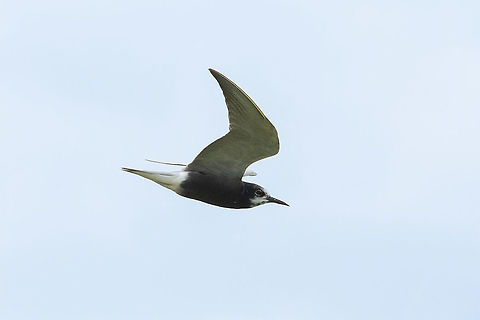
Reproduction
Their breeding habitat is freshwater marshes across most of Canada, the northern United States and much of Europe and western Asia. They usually nest either on floating material in a marsh or on the ground very close to water, laying 2–4 eggs.References:
Some text fragments are auto parsed from Wikipedia.